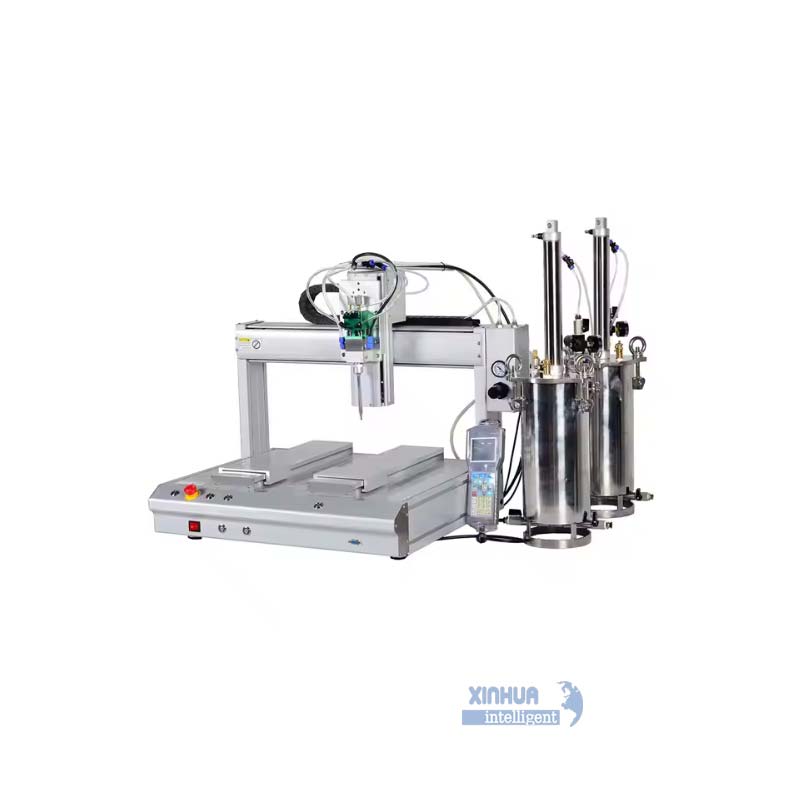
Key Features and Functionality:
- Two-Part Mixing: Epoxy glue typically comes in two parts (a resin and a hardener) that need to be mixed in a specific ratio before application.
- Automated Mixing: The machine automatically meters and mixes the two components according to the desired ratio, ensuring proper curing.
- Precise Dispensing: It accurately dispenses the mixed epoxy onto the desired surface, whether it's a bead, dot, or a specific pattern.
- Variety of Applications: These machines are used in various industries, including electronics, LED manufacturing, and general assembly, for potting, encapsulation, sealing, and adhesive bonding.
- Increased Efficiency: By automating the mixing and dispensing process, these machines significantly increase production speed and consistency compared to manual methods.
- Improved Accuracy: They offer high precision and repeatability, ensuring consistent bond strength and quality.
- Reduced Waste: Automated dispensing minimizes material waste, leading to cost savings.
Common Components:
- Tanks/Reservoirs: Hold the separate resin and hardener components.
- Metering Pumps: Accurately measure and deliver the correct amount of each component.
- Mixing Device: Combines the two components to create the epoxy mixture.
- Dispensing System: Includes nozzles, valves, and potentially robotic arms for precise application.
- Control System: Often a PLC (Programmable Logic Controller) that manages the entire process, including dispensing parameters and safety features.
In essence, an epoxy glue dispensing machine is an automated solution for handling the complexities of two-part epoxy adhesives, offering increased efficiency, accuracy, and consistency in various manufacturing and assembly processes.
